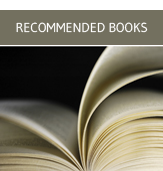In Case You Missed It Part 6: Selected Recent Acquisitions
There are hundreds of thousands of books published each year, and it is easy for good books to get lost. The books featured in our occasional In Case You Missed It posts are recently acquired books that may have eluded the radar of even the most ardent readers. The books featured are old and new, imported and domestic, mainstream and marginal, from small presses and large. What they have in common is that they caught our eye while reading hundreds of book reviews and scanning publisher catalogs.
It has been about four months since ICYMI-5, and it’s been a busy season. As always, the list below is a highly subjective selection of titles recently added to the collection (mostly during the fall and early winter), and we had to leave off dozens of worthy titles. To see much more comprehensive lists of recent acquisitions, check out our monthly new books lists (current / previous). Each features over 200 new books.
Looking for more to read? There is no substitute for browsing in our open stacks, but check out the links to previous “In Case You Missed It” posts here (ICYMI-5) for some more ideas. —Steven McGuirl & Patrick Rayner, Acquisitions
Jump to: Fiction, Literature, Essays | Wonders, Real & Imagined | Biography, History & Travel | Fine Arts, Performing Arts & Photography | Social Science, Current Events & More
FICTION, LITERATURE, ESSAYS
The Secret Trollope: Anthony Trollope Uncovered | John Sutherland 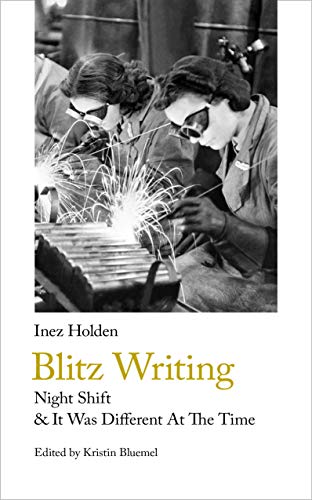
Anthony Trollope is easily one of the most popular authors among Society Library members, and this book is certain to find an appreciative audience. The TLS: “John Sutherland’s familiarity with (and affinity for) his subject is evident throughout this informal yet informed exegesis of Trollope’s major works and his Autobiography —an attempt to capture an accurate reflection of the man…This book concentrates on that hidden Trollope, the man behind the thirty-three-year service at the Post Office, the author of more than forty novels.” Sutherland is Professor Emeritus of Modern English Literature at University College. He has been called “the foremost authority on Victorian publishing” and claims “65 years’ experience reading and 45 years writing about Trollope.”
Blitz Writing: Night Shift & It was Different at the Time | Inez Holden
This re-publication brings back two legendary and impossibly rare books, long out of print. "Night Shift" is a 1941 novella that follows a working-class cast of characters for five nights in a factory that produces camera parts for war planes. "It Was Different at the Time" (1944) is Holden’s account of wartime life from April 1938 to August 1941, drawn from her own diary. The latter was intended to be a joint project written with her friend George Orwell and includes disguised appearances by notable literary figures of the period (Holden was friends with several: HG Wells, Stevie Smith, Anthony Powell, etc.). The TLS describes these works as “essential documents of the Blitz…alert and inquisitive in their attention to the textures, interactions and routines of everyday life under fire…[using] lyrical, controlled prose, Holden’s attention to the personalities and backgrounds of those she worked among, to their body language and habits of speech, renders her portrayals vivid and memorable.” The excellent Neglected Books website echoes this assessment: “Whether her dialogue is invented or recorded — probably a mix of both — Holden was expert at capturing a whole person in their words.” Neglected Books also posted this remembrance of Inez Holden by Anthony Powell, originally in London Magazine in 1974.
Nest in the Bones: Stories | Antonio Di Benedetto
From the excellent Archipelago Books, comes this career-spanning anthology of an Argentinian writer who has long been considered a master in his native country. Di Benedetto (1922–1986) counted Borges, Coetzee, and Bolaño (“one of the greatest Argentinean writers and one of the greatest writers of Latin America”) among his admirers and reviews have compared his work to Borges, Kafka, and Dostoevsky. “[Nest in the Bones] display[s] to perfection Di Benedetto’s intense understanding of nastiness. . . and something of the range of his experiments with strangeness. . . It’s true that many of the stories in Nest in the Bones are dark and even cruel, but there is no dogma of darkness here.” — Michael Wood, London Review of Books
At the Edge of the Night | Friedo Lampe
This impressionistic novel covers one single evening in September in Bremen, a harbor town in northern Germany. Lampe describes the town’s inhabitants and lets us in on their conversations. These stories are variously charming or squalid, lusty or funny, but all relayed without judgment in a style reminiscent of Henry Green. Perhaps it was the content of the stories, or Lampe’s lack of judgement that saw to this book being withdrawn from sale just weeks after its release. Lampe’s book was published in October 1933, and banned by Nazis before the end of that year. About these circumstances he said it was “born into a regime where it could not breathe." Still he hoped that one day it might rise again. And here, with a translation by Simon Beattie, it finds another life. Lampe’s own life was similarly dramatic. He was disabled and gay, yet he survived the Third Reich. He was shot by the Red Army six days before the end of World War II.
The Copenhagen Trilogy (Youth, Childhood, Dependency) | Tove Ditlevsen 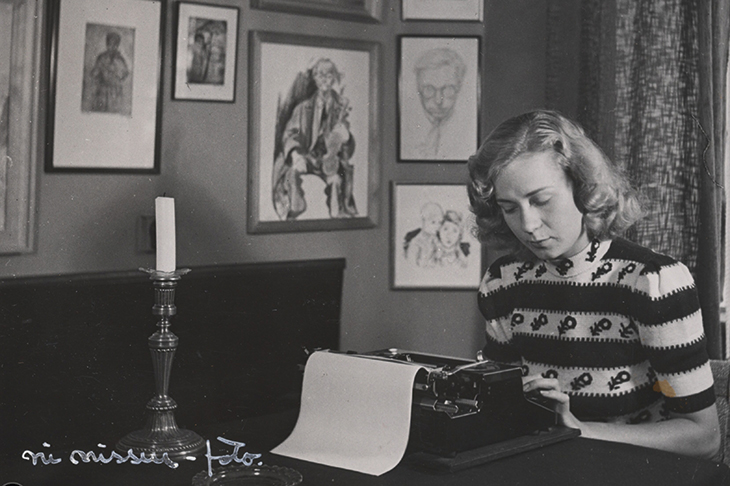
Ditlevsen’s trilogy was originally published between 1967 and 1971. Penguin Classics UK recently released this translation by the acclaimed Tina Nunnally. The Spectator called Ditlevsen “the greatest Danish writer you’ve never heard of,” and The Guardian recently wrote that “For the four decades after the outbreak of the second world war, Tove Ditlevsen was one of Denmark’s most famous and extravagantly tortured writers, whose many identities – dreamy working-class misfit, ruthlessly focused artist, ambivalent wife and mother, literary outsider and drug addict – were constantly at war. While always the central protagonist in her dispatches from the frontline of her own life, she never pretended to be the heroine. Which makes it unsurprising that in an era with an appetite for autofiction, her mordant, vibrantly confessional autobiographical work should be experiencing a revival…The Copenhagen Trilogy’s evocation of a working-class woman’s battle with masters, leashes and her own demons makes it a masterpiece in its own right.”
White Flights: Race, Fiction, and the American Imagination | Jess Row
Booklist: “In this startling essay collection, Row (Your Face in Mine, 2014) catalogs the various ways white writers erase, marginalize, and displace racial issues, a concept he calls 'white flights.'” Row examines the work of Marilynne Robinson, Raymond Carver, Richard Ford, Jonathan Franzen, Anne Tyler, David Foster Wallace, among others, to show writers use space, time, and style to enact these flights. Booklist describes the book as “full of brilliant readings and beautifully written, this mind-altering work of criticism establishes Row as one of the preeminent cultural critics of our age” and Kirkus calls it “wide-ranging, erudite, and impassioned.”
Exposed | Jean-Phillippe Blondel
Louis Claret is 58 and recently divorced. He is invited to an art opening of a former student, who has found some fame as a painter. Louis barely remembers the artist, Alexandre, but the encounter eventually leads him back into Alexandre’s life. Eventually, the painter asks Louis to sit for a portrait. The attention from the younger man rescues Louis from his slump; he is stirred by the attention. The New York Times raves “Blondel’s delicate but suspenseful sentences exploit the shared erotic frisson of their renewed acquaintance to investigate how much of ourselves we are really willing to unveil…Blondel’s book, aided by Anderson’s deft translation, is the genuine article: an emotionally taut portrayal of late-in-life, post-marriage drift.”
A Story from the Dunes and Other Tales | Hans Christian Andersen
In his later years, Hans Christian Andersen wrote novellas and stories for an adult readership, including Story from the Dunes. The story follows the restless life of its central character, a man of noble Spanish parentage, brought up by fishing folk ignorant of his origins (his mother died in a shipwreck),. Published in 1859, the same year as On the Origin of Species, this novella explores the tension between science- and faith-based interpretations of human existence. Publisher Angel Classics has also made Andersen’s Ice Virgin available in English translation, and it is waiting on the shelf in stack five.
I Lost My Girlish Laughter | Jane Allen
Even for hardcore fans of Hollywood novels, this 1938 book, long out of print, is fairly obscure. Credited author Jane Allen is actually two co-writers: Silvia Schulman Lardner, who was legendary producer David Selznick’s secretary (and was married to writer Ring Lardner Jr.), and screenwriter Jane Shore. The protagonist of the novel, Madge Lawrence, is a young secretary working for a powerful Hollywood producer named Sidney Brand (apparently, a fairly transparent stand-in for Selznick), and through her letters home—as well as interoffice memos, telegrams, journal entries, and gossip columns—entertainingly exposes daily life in 1930s studio system Hollywood. Kirkus describes it as a “screwball sendup” and “a hell of a lot of fun.” If you like this kind of thing, a few years ago Library staff wrote this article recommending favorite their Hollywood novels.
September 1, 1939 | Ian Sansom
"September 1, 1939" is a poem by W.H. Auden, written in a worried state at a bar shortly after Auden moved to New York and days after Germany invaded Poland. It is often reached for in times of tragedy, both personal and national. Ian Sansom, someone who is most famous for his mystery novels, is also a critic of some note. He admits he’s been trying to write this book for some twenty five years, though he’s wrestled with the poem for longer. This book, ostensibly about the poems, is full of digressions and musings, mostly about Auden and his New York City, and Sansom makes a wonderful companion through all of it. Writing in The Guardian, Blake Morrison says, “Shandyesque and magpie-like, scholarly yet frolicsome, the book makes room for all manner of diverse material, to great effect. Not that Sansom would admit as much: he keeps telling us how boring and ordinary he is.” Of course he’s anything but.
Will and Testament | Vigdis Hjorth
Upon its publication in Norway, this book became both a runaway best seller and a scandal. Though the author insists it is fiction, readers noticed the conspicuous similarites between the narrator, Bergljot, and Vigdis Hjorth herself. Like Karl Ove Knausgaard, who also used a fictionalized version of his life to reveal ugly truths, Hjorth is determined to speak the unspoken. The novel opens with a dispute over an inheritance. Bergljot’s father has died and the siblings are arguing over who will inherit some property. What the siblings aren’t discussing is Bergljot’s accusation, some years earlier, that her father had raped her when she was a little girl. She has been estranged from her family since she made the accusations. “The novel’s drama is all in emotional communication of various stripes — repressed, tentative, impassioned. Hjorth’s prose, in Barslund’s translation, mostly marches steadily in a plain tone that plays against the novel’s volatile contents. But the cumulative effect is hypnotic” declares the New York Times. The novel was longlisted for the National Book Award for translated literature.
Good Things out of Nazareth: the Uncollected Letters of Flannery O'Connor and Friends (Benjamin B. Alexander, ed.) 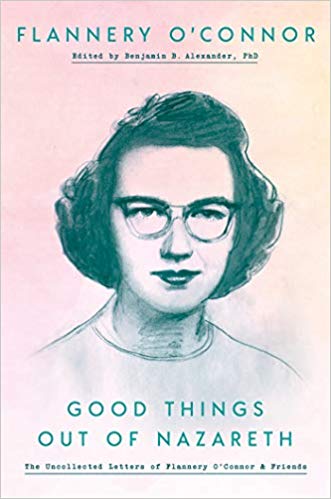
If you have spent any time with The Habit of Being, the 1979 collection of O’Connor’s letters, you know that O’Connor’s correspondence provides fascinating and entertaining reading on all matter of topics, especially writing, literature, and religious faith. Letters exchanged with one of her mentors, author Caroline Gordon, are at the center of this new collection and reveal important aspects of O’Connor’s development as a writer. Other correspondents include Robert Lowell, Walker Percy, and Katherine Anne Porter. Letters exchanged with two Jesuit priests show how O’Connor tried to live by the Catholic faith that informed her work.
Women's Weird: Strange Stories by Women, 1890-1940 | Melissa Edmundson, ed.
“Weird” encompasses the supernatural, horror, science fiction, fantasy and the Gothic. This collection features 13 stories by women writers from the United Kingdom and the USA, including Mary Butts, Edith Wharton, and lesser known authors. The TLS: “The collection is a deliberate effort to attenuate, in the horror tradition, the dominance of men like M R James, Arthur Machen, H P Lovecraft and Ambrose Bierce, and restore to prominence innovative writers such as May Sinclair, Mary Butts and Margery Lawrence … The stories branch out from an older ghost-story tradition to ‘explore more universal imaginings of fear, unease and dread’. They show the continuing influence of Gothic and supernatural tropes and the effect of their collision with a modernizing world and women’s changing roles within it.”’
Book Parts (Dennis Duncan & Adam Smyth, eds.)
Don’t know your frontispiece from endleaves? Engravings from woodcuts? The book historians who contribue to Book Parts examine the anatomy of books over twenty-two chapters, revealing the components that surround the text and that help build these perfect vessels for conveying information and telling stories. Ian Sansom reviewed Book Parts in The Spectator: "One might well assume that Book Parts is going to be pretty much unreadable and uninteresting, except perhaps to that rare sub-sub-species of the academic sub-species, the book historian. The good news is that it’s not at all unreadable or uninteresting. It’s a book designed to appeal to anyone like you or me, the proverbial common reader, who has been reading books for longer than we can remember, yet who perhaps knows next to nothing about the history of the fleuron or the architectural origins of the epigraph and the frontispiece (from medieval Latin, meaning ‘looking at the forehead’ and referring originally to ‘the front of a building’)."
Where the Light Falls: Selected Stories of Nancy Hale (edited by Lauren Groff)
Nancy Hale (1908-1988), was the author of eight novels, including the best-selling The Prodigal Women, four short story collections, and more. At one point, she was widely considered a master of the genre, winning ten O. Henry Awards and was a frequent contributor to The New Yorker fiction pages from the 1930s to the 1960s. However, canon formation is a cruel and mysterious thing, and Hale was largely forgotten at the time of her death. This collection, recently published by the Library of America, attempts to resurrect her reputation. Reviews have praised her exploration of “the borderland between inner truth and outer obligation, otherness and conformity, what remains and what is lost, what humans want to be and what is actually within their power to do (Publisher’s Weekly)” and her deft handling of complex women characters. Words like “insightful” and “elegant” appear regularly in reviews. Despite being “forgotten,” you can still find 16 other works by Hale available to members on our shelves—because that is what we do.
WONDERS, REAL AND IMAGINED
The Penguin Book of Mermaids | Cristina Bacchilega and Marie Alohalani Brown, eds.
The 63 pieces in this nifty anthology range from Scottish selkies to Hindu water-serpents to Chilean sea fairies. A third of the selections are published here in English for the first time, and all are accompanied by commentary including exploration into how this popular mythical being illuminates issues of gender, spirituality, ecology, and sexuality. “The desires and dangers of the shape-changing sea have rarely been so intelligently and inclusively showcased as in this accessible yet rigorous, passionately diverse, and thoroughly spellbinding anthology of water spirits from around the world” (Publisher’s Weekly).
American Cosmic | Diana Pasulka 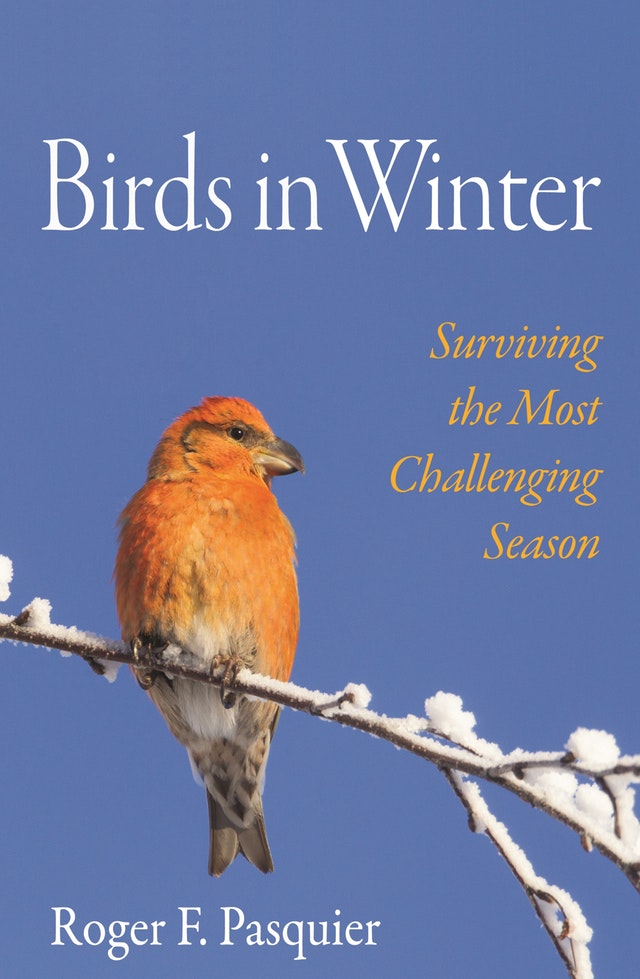
Reportedly, one-third of Americans believe in UFOs. Pasulka is a professor of religious studies at the University of North Carolina Wilmington, and in American Cosmic she approaches UFOs—and those who believe in them—as a sort of American religion. The book offers “a personal account of her encounters with believers [including a subculture of scientist believers who keep their research secret] and a frank discussion of her evolving understanding of the UFO phenomenon (Publisher’s Weekly).” Along the way, she travels from an uncharted location in New Mexico to the Vatican. Booklist calls this “a sober, generally accessible account of research into what Pasulka calls a new religion… a hybrid of the lively and the abstruse.”
Birds in Winter | Roger Pasquier
For the many birding enthusiasts and amateur ornithologists in our membership, this book should be considered essential reading. Roger F. Pasquier is the author of several books on ornithology and art history and is a lifelong birder. He has worked with the International Council for Bird Conservation, the Environmental Defense Fund, and the National Audubon Society, and is currently an associate in the Department of Ornithology at the American Museum of Natural History. His latest book is the first devoted to the ecology and behavior of birds in winter, whether they remain in regions with cold weather and shorter days or migrate to the tropics where they must adapt to different ecosystems and communities of resident birds. No less an authority than Bernd Heinrich, author of Ravens in Winter and Winter World, raves: “read this book and be amazed, inspired, and touched with awe.” Mr. Pasquier wrote an excellent article for the Library website, featuring his favorite books on birds and you can read that here.
Ahab’s Rolling Sea: A Natural History of Moby Dick | Richard J. King
From white whales to whale intelligence, giant squids, barnacles, albatross, and sharks, Richard J. King examines what Melville knew from his own experiences and the sources available to a reader in the mid-1800s, exploring how and why Melville might have adapted what was known to serve his fiction. The Society Library collection almost certainly provided material for this process. We know that Melville checked out the Library’s copy of An account of the Arctic regions with a history and description of the northern whale-fishery by William Scoresby while writing Moby Dick.
An Atlas of Geographical Wonders: From Mountaintops to Riverbeds: a Selection of Comparative Maps and Tableaux | Jean-Christophe Bailly, et al., eds.
This is the first book to catalog comparative maps and tableaux that visualize the heights and lengths of the world's mountains and rivers. Most of the work here was produced in the 19th century, and although rooted in contemporary developments in exploration, cartography, and the science of measurement, the creators of these works seem to revel in the power of imagination, producing “a mesmerizing array of realistic and imaginary forms.” This beautiful book is not to be missed if you enjoy exploration, history, natural history, cartography, geography, illustration…no description will adequately sum up its appeal.
The Story of the Dinosaurs in 25 Discoveries: Amazing Fossils and the People who Found Them | Donald R. Prothero
Following The Story of the Earth in 25 Rocks and The Story of Life in 25 Fossils, Prothero presents an education on dinosaurs through the history of the discovery of their bones. The book has been widely recommended to readers from high schoolers through adults and Kirkus notes that “despite the cheery title, generous illustrations, and plethora of anecdotes about eccentric bone hunters, this is a serious primer on dinosaur science.”
The Art of the Bird: The History of Ornithological Art Through Forty Artists | Roger J. Lederer
This anthology begins in the early 1600s with the work of Flemish painter Frans Snyders and continues through to contemporary artists like Elizabeth Butterworth. Along the way it encompasses a wide range of artistic styles and includes artists from around the world, all devoted to capturing the beauty of birds.
BIOGRAPHY, HISTORY & TRAVEL
Renia's Diary | Renia Spiegel
Renia Spiegel was born in 1924 to an upper-middle class Jewish family in southeastern Poland. At the start of 1939 Renia began a diary; three years later, she was murdered by the Gestapo. Her diary is a fascinating look at the life of a teenager during exceptionally horrific times. Although Renia’s diary was held by her family for decades it remained unread until the 21st century. You can read about the diary, and the fascinating story of its publication in The Guardian. 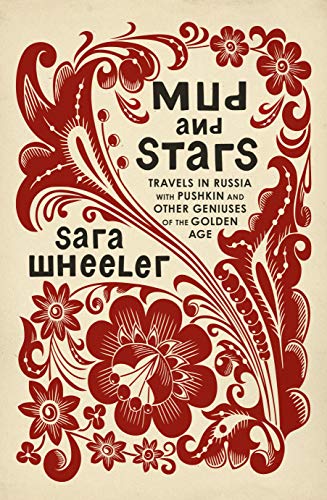
Stolen: Five Free Boys Kidnapped into Slavery and their Astonishing Odyssey Home | Richard Bell
After Congress banned slave imports from Africa and the Caribbean in 1808, child snatching in Northern states was “frequent, pernicious, and politically significant.” In Stolen, University of Maryland professor Bell uncovers the story of five African-American boys kidnapped from Philadelphia and sold into slavery in Mississippi and Alabama in 1825 (and the eventual miraculous return of three of them to the city and to freedom). Publisher’s Weekly: “Drawing from a wealth of archival materials, Bell paints a harrowing picture of this human trafficking network and the ‘tens of thousands of free black people’ it ensnared. The result is a scholarly work that tells a powerful human interest story.”
Mud and Stars: Travels in Russia with Pushkin and Other Geniuses of the Golden Age | Sara Wheeler
Booklist: “Using golden-age Russian writers Pushkin, Dostoevsky, Lermontov, Gogol, Chekhov, Leskov, Herzen, and Tolstoy as her guides, Wheeler traverses every facet of this vast nation, from its western rim near Estonia to the remote eastern expanses of Siberia… Wheeler carves a unique portrait of Russia, one informed by a genuine affection for the food, culture, and landscape. A journey through time, space, and personal, culinary, and literary history, Wheeler's latest is a joyous demonstration of how brilliantly immersive travel writing can be at its very best.”
Black Radical: the Life and Times of William Monroe Trotter | Kerri Greenidge
This is the first major biography of Trotter (1872-1934) in half a century. As an outspoken, pioneering civil rights activist and editor of the Boston-based black weekly newspaper The Guardian, Trotter was an early and important inspiration to W.E.B. DuBois. His influence extends to the early founding of the NAACP (he split with them over white leadership and financial support) and the organization of civil rights protest marches. His uncompromising approach to race relations and civil rights in the U.S. would provide a blueprint for subsequent leaders. From being the first African-American elected to Phi Beta Kappa at Harvard, to confrontations with President Woodrow Wilson, and his calls to ban Birth of a Nation, Trotter led an eventful life. The New York Times notes that “Greenidge, a historian at Tufts University, is as interested in Trotter’s context in the post-Reconstruction North as she is in the man himself” and does not shy away from “convey[ing] the more vexing elements of his personality.”
Poisoner in Chief: Sidney Gottlieb and the CIA Search for Mind Control | Stephen Kinzer
Gottlieb was the leader of the CIA’s notorious MK-Ultra project, an ambitious investigation into the potential of psycho-active drugs as truth serums. All kinds of unsavory and appalling “research” was considered necessary, including dosing unwilling (and unknowing) patients with drugs like LSD and mescaline. Publisher’s Weekly: “…a stranger-than-fiction account of the CIA’s efforts in the 1950s, ’60s, and ’70s at developing mind control and chemical-based espionage methods, and the chemist, Sidney Gottlieb, who spearheaded the effort….[Gottlieb’s] nigh-unbelievable efforts are vividly and horrifically recreated in this fascinating history.”
She Came to Slay: the Life and Times of Harriet Tubman | Erica Armstrong Dunbar
Dunbar is the author of the acclaimed 2017 book, Never Caught: The Washingtons' Relentless Pursuit of Their Runaway Slave, Ona Judge. Her latest is a well-researched but accessible illustrated biography of Harriet Tubman—successful conductor on the Underground Railroad, civil rights and women's suffrage pioneer, touring speaker on abolitionism, spy for the Union Army, and a nurse to black soldiers. Kirkus: “this smoothly readable narrative…[is]…perfect for Tubman novices but also enjoyable historical reading for those who already know most of the stories.”
Winds of Change: Britain in the Early Sixties | Peter Hennessy 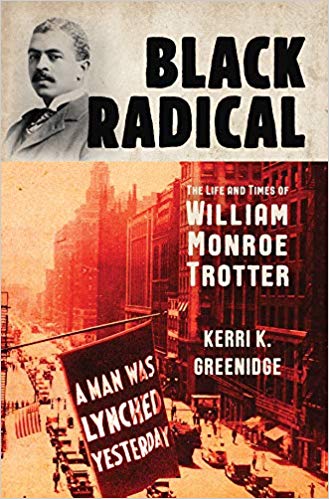
This is the third in Hennessy’s line of UK histories. The first two, Never Again: Britain, 1945-51 and Having it So Good: Britain in the Fifties were popular and well-received by British critics. The Guardian’s Tim Adams raves that like those previous books, Winds of Change “performs a singular balancing act between social history and cabinet-room politics. No current historian is as versed as Hennessy in the internal cogs and springs of the British state.” Kathryn Hughes, also writing in The Guardian raves: “Don’t expect a slack meander through the entire decade, stopping off at the usual staging posts…Hennessy is careful not to simply rehash old historical paradigms …What we have instead is a forensic look at the years from 1960 to ‘64 …What makes [Hennessy] such a deft public historian is the way he stitches patches of rich local colour into a narrative with the widest possible reach.”
FINE ARTS, PERFORMING ARTS & PHOTOGRAPHY
Edith Halpert, the Downtown Gallery, and the Rise of American Art | Rebecca Shaykin
Edith Halpert (1900–1970) was the first significant female gallerist in the United States. As the founder of the Downtown Gallery in New York (the first commercial art space in Greenwich Village) in 1926, Halpert helped to shape an identity for American art, and her efforts were instrumental in distinguishing it from the European avant-garde. Works by Raphaelle Peale, William Harnett, Stuart Davis, Ben Shahn, Jacob Lawrence, Charles Sheeler, Georgia O’Keeffe, Arthur Dove, Marsden Hartley, and many significant artists found a place at Halpert’s gallery. This book accompanies an exhibition at The Jewish Museum from October 18, 2019–February 9, 2020.
Golden Prospects: Daguerreotypes of the California Gold Rush | Jane Aspinwall
The California gold rush was the first major event in American history to be documented in depth by photography. As the rush got underway, enterprising photographers followed the gold-hunters, seeking their own riches by establishing portrait studios and venturing into the gold fields with unwieldy equipment to capture the moment. This is a beautiful book, not to be missed by American history readers or fans of photography, and it includes numerous images published here for the first time.
Jerome Robbins, by Himself: Selections from His Letters, Journals, Drawings, Photographs, and a Memoir in Progress (Amanda Vaill, ed.)
Biographer Amanda Vaill (Somewhere: The Life of Jerome Robbins) draws on Robbins’ archive, more than 200 linear feet of shelf space in the Jerome Robbins Dance Division at the New York Public Library, to let the words and occasional drawings of the legendary choreographer speak for themselves. Booklist: “The result is a carefully curated and meticulously footnoted selection of journal entries, correspondence, sketches, photographs, and more…[provides] a different perspective on this contradictory artist than has been possible in any of the biographical works about him.”
History of Art History | Christopher Wood
This study is, amazingly, the first of its kind in English. Christopher Wood—former Carnegie Professor in the History of Art at Yale University, currently chair of the Department of German at New York University—tracks the evolution of the historical study of art from the late middle ages through the rise of the modern scholarly discipline of art history. “Owing to its extraordinary range and original insights, it is destined to become the standard work for many years to come” (Apollo Magazine).
Cut and Paste: 400 Years of Collage | Patrick Elliott 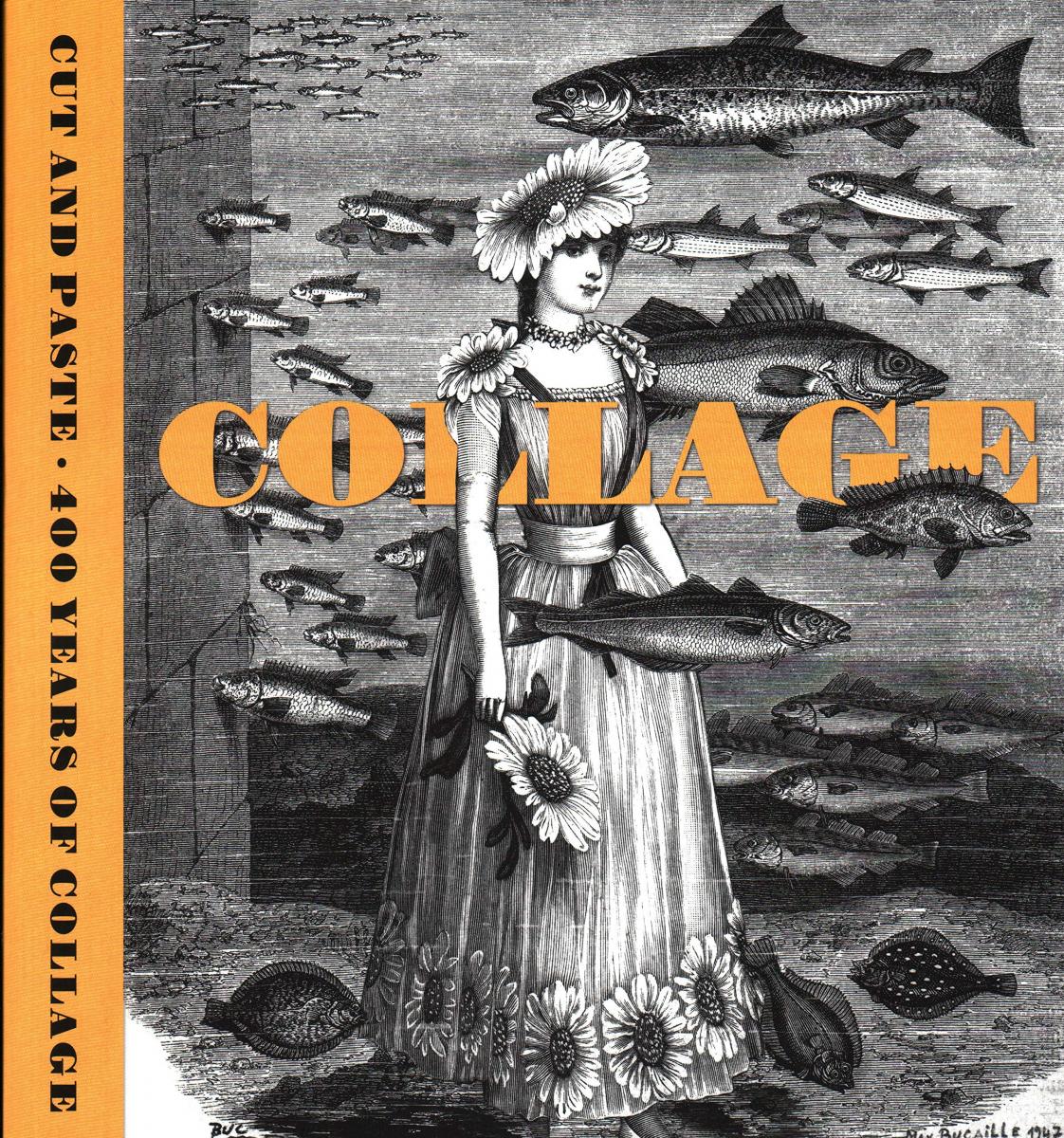
The catalog to an exhibition at the National Galleries of Scotland, the first survey of collage art ever displayed. Near-comprehensive in scope, Cut and Paste ranges from 19th-century DIY collage kits to Peter Blake and Jann Haworth’s cover for the Beatles’ Sergeant Pepper’s Lonely Hearts Club Band. Also included are ‘flap-prints’, collage inspired by 70s counterculture, Valentines greeting cards, Pablo Picasso’s Cubist collage masterpieces and Dada and Surrealist collages by artists including Joan Miro and Max Ernst.
Vija Celmins: To Fix the Image in Memory | Gary Garrels
This catalog accompanies a retrospective exhibition at the Met Breuer, and includes a career overview and interviews with Celmins. The New York Review of Books: “Celmins has been an admired artist for more than fifty years, and for most of that time critics have struggled to explain the elusive poignancy and staying power of her work. In an art world that rewards noisy assertion and the avid annexation of wall space, her work is thoughtful, modest in scale, mostly black-and-white. And while much contemporary art prides itself on being difficult, even opaque, Celmins’s paintings and drawings of night skies and oceans are eye-pleasing and generous in a way that keeps them broadly appealing.”
Letters from Hollywood: Inside the Private World of Classic American Moviemaking (Rocky Lang & Barbara Hall, eds.)
This entertaining and handsome book reproduces in full color 135 letters, memos, and telegrams, arranged chronologically from the silent era through the 1970s. Culled from libraries, archives, and personal collections, the pieces are annotated by the authors to provide backstories and further context. The stars of this production include celebrities like Greta Garbo, Alfred Hitchcock, Humphrey Bogart, Frank Sinatra, Katharine Hepburn, Marlon Brando, Elia Kazan, Cary Grant, Francis Ford Coppola, Tom Hanks, and Jane Fonda. 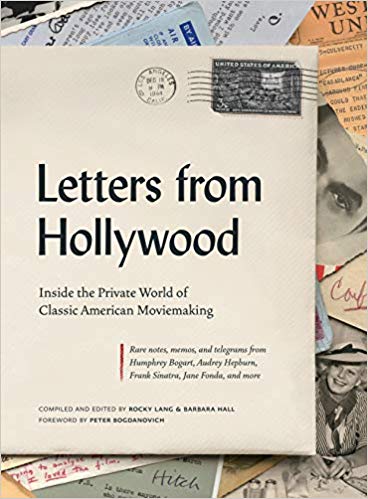
The “How to Read” series from the Metropolitan Museum of Art
The Library owns seven volumes in this excellent series from the Metropolitan Museum and Yale University Press. The books provide an introduction and overview of varied topics with individual volumes devoted to Islamic carpets and calligraphy, European armor, Oceanic art, Greek vases, Chinese ceramics and painting, and more.
Endless Enigma: Eight Centuries of Fantastic Art | Nicholas H. J. Hall
Based on an exhibition at the David Zwirner gallery in New York, this catalog includes artists from the 12th century to the present organized into six themes—Monsters & Demons, Dreams & Temptation, Fragmented Body, Unconscious Gesture, Super Nature, and Sense of Place. According to the gallery press release, “the exhibition takes as its point of departure Alfred Barr’s legendary 1936 exhibition at MoMA ‘Fantastic Art, Dada, Surrealism.’” The list of over 60 artists included in the exhibition—William Blake, Louise Bourgeois, Raymond Pettibon, Duchamp, Bosch—is compelling and the artists’ works are accompanied by several scholarly essays.
The Letters of Cole Porter (edited by Cliff Eisen)
This is the first comprehensive collection of letters from Cole Porter, spanning from the first decade of the twentieth century to the early 1960s. It features correspondence with stars such as Irving Berlin, Ethel Merman, and Orson Welles, as well as his friends and lovers. The Wall Street Journal notes that the letters are most revealing—and most entertaining—about Porter’s working habits. Although the mystery of Porter’s genius remains, on the whole, elusive, letters reveal that hard work and rhyming dictionaries played no small part in his success.
True Grit: American Prints from 1900 to 1950 | Stephanie Schrader, James Glisson, Alexander Nemerov
In the first half of the twentieth century, some American artists embraced the democratic inclusiveness of the Progressive movement and turned to making prints. For their subject matter, the artists mined the cities in which they lived and worked: towering skyscrapers and stifling streets, jazzy dance halls and bleak tenement interiors. True Grit includes prints by well-known artists like George Bellows, Edward Hopper, Joseph Pennell, and John Sloan as well as lesser-known artists. The authors are scholars of printmaking and American art, the essays discuss the prints within the context of gender, class, literature, and politics of the first decades of twentieth-century America. This volume is published to accompany an exhibition on view at the J. Paul Getty Museum at the Getty Center October 15, 2019, to January 19, 2020.
SOCIAL SCIENCE, CURRENT EVENTS, AND MORE
Newcomers: Gentrification and its Discontents | Matthew L. Schuerman
The word “gentrification” gets frequently dropped these days, and in his debut Schuerman “unpacks the loaded word, allowing readers to understand it as a complex phenomenon in urban neighborhoods” (Kirkus). He draws on case studies from neighborhoods in New York City (northwest Brooklyn), San Francisco, and Chicago, and “never allows nostalgia to compromise his educated opinions.”
Crisis of Conscience: Whistleblowing in an Age of Fraud | Tom Mueller 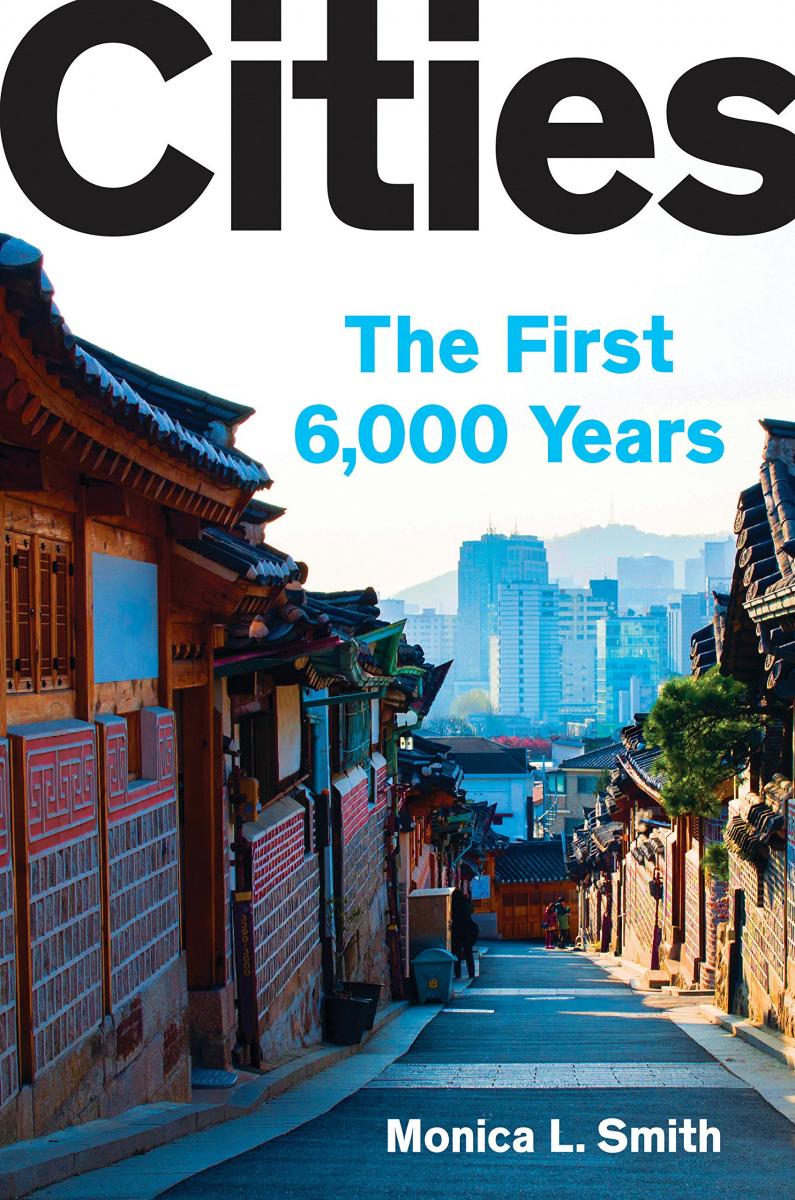
We hear this word a lot lately, as well, and Mueuller offers a thorough history of whistleblowing. By chronicling a series of cases drawn from the worlds of healthcare, Wall Street, Washington and more, and drawing on in-depth interviews with more than two hundred whistleblowers, Mueller shows how shifting mores interact with whistleblowing, and how in the second decade of the 21st century, whistleblowing has become an established and effective American institution, and Mueller concludes, “a symptom of a society in deep distress.”
Growth | Vaclav Smil
Bill Gates has said he waits for new Vaclav Smil books like some people wait for the next Star Wars movie. The Guardian declared him “the nerd’s nerd.” As we begin to reckon with the damage we have done to the planet, people have increasingly turned to Smil. He is now seen as one of the world’s foremost thinkers on development history and writes compellingly about the environment, population, food, and energy. In this book, his most recent, Smil explores how things grow not only in the world of biology but also in human systems—economies, technologies, and empires. He synthesizes data to paint a picture of where we stand in relation to our finite resources. He refers to it as “the megabook on growth…People can take any number of books out of it—economists can read about the growth of GDP and population; biologists can read about the growth of organisms and human bodies. But I wanted to put it all together under one roof so people could see how these things are inevitably connected and how it all shares one crystal clarity: that growth must come to an end.”
The History of Philosophy | A.C. Grayling
This one-volume survey has been garnering positive comparisons to classics by Will Durant and Bertrand Russell. However, as Michael Dirda writing in the Washington Post points out, Grayling devotes more than 200 pages to 20th-century thinkers, as well as introductions to Indian, Chinese, Arabic-Persian, and African philosophy, adding that “no other popular survey possesses this range.” Publisher’s Weekly—in a review that includes adjectives like “indispensable,” “impressive,” “superb,” and “comprehensive”—singles out Grayling’s “greatest strength as his ability to categorize, contrast, and clarify complex ideas.” See also: Peter Adamson's recent multi-volume series, A History of Philosophy Without Any Gaps.
Cities: The First 6,000 Years | Monica L. Smith
Publisher’s Weekly: “Archaeologist and anthropologist Smith traces the cultural phenomenon of cities through time in this enjoyable, humorous combination of archeological findings, historical documents, and present-day experiences. She argues that city life has been remarkably consistent across millennia—proximity to strangers, big public squares, and winding residential streets, housing shortages, landfills, markets, and graffiti were as much a part of ancient city life as of modern.”
